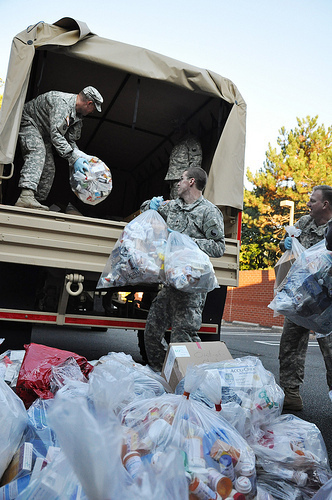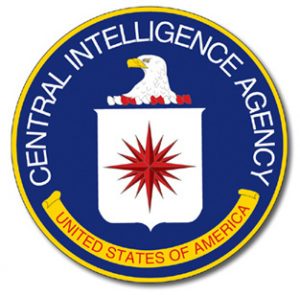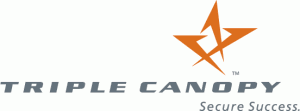A mercenary is typically thought of as a soldier-for-hire by entities other than his or her own country’s military. When seeking out a mercenary-like job, a common question asked on job applications is what type of guns the individual is either familiar with or qualified to shoot. Although most private security companies will provide proficiency and advanced weapons handling training, there is an expectation of a basic-level of firearms familiarity with common mercenary guns by the job applicant. These include various 9mm or equivalent handguns such as the Glock 9mm, rifles such as the M-4, M-16, and AK-47, and various other large caliber weapons.
Mercenary Handguns
When seeking employment as a private security contractor, proficiency in one or more handgun types is a must for the majority of companies. The reasons vary depending on the nature of the job the person will be filling; however, when taking a job where one can be part of a personal protective detail the use of a concealed handgun is a requirement for most armed security details.
Glock 17 (9mm)
Despite early reliability concerns when Glock pistolswere first manufactured due to their composite construction, they have become one of the

most popular handguns on the public and military market. The company has more than 65 percent of the market share for U.S. law enforcement agencies and supplies a number of NATO and non-NATO armed forces and security agencies.
The Glock 17 (9 x 19), 9mm pistol is used by the majority of law enforcement agencies who employ pistols across the world. The pistol is rated at above-average reliability and has a full magazine capacity of 17 rounds. The Glock 17 has a low overall weight (just over 22 ounces) and the Glock “Safe Action” trigger system designed for use in high-pressure situations in the field. If you are looking for Glock 17’s for sale in the United States to work on your shooting before applying for a private security or military job, they will typically retail for around $500 USD depending on the merchant and options you choose for the weapon.
Glock Production history
Designer Gaston Glock
Designed 1979–1982
Manufacturer Glock Ges.m.b.H.
Produced 1982–present
Number built 2,500,000
Glock 17 Specifications
Cartridge: 9×19mm Parabellum
Action: A short recoil, tilting barrel, and locked breech.
Muzzle velocity: 375 m/sec (1,230 feet/second)
Effective range: 50 m/55 yards
Feed system: Box magazine
Sights: Options of fixed, adjustable, and Tritium-illuminated handgun night sights
Glock 26 “Baby Glock”
The Glock 26 Gen 4 is also known as the “Baby Glock” in industry. Rated at 9 x 19 mm, it has taken over from the 5-round snub-nosed revolver as one of the weapons of choice for concealed carry. The magazine has a capacity of 10 rounds and the weapon is rated as being very accurate. The Baby Glock sells new at around $500 give or take $50 USD depending on the state you are buying the pistol and can commonly be found in good or better condition used for around $400 USD.
Heckler & Koch HK45
The Heckler & Koch HK45 is a 45 caliber German manufactured pistol. It was first made as an improvement over the USP45 and was released in 1995. The HK 45 improvements include changeable grip panels, better ergonomics, more ambidextrous controls, and a Picatinny MIL-STD-1913 accessory rail. The pistol (along with the popular HK45 Compact) was produced as a potential candidate for use by the U.S. military as a successor to the 9MM M9; however, the programs looking at a successor to the M9 were suspended before a replacement was selected.
The HK45 makes use of a proprietary O-ring barrel to ensure a very precise barrel-to-slide lookup and maximizes the accuracy of the weapon. The HK45 models are able to be fitted with a threaded barrel to use with sound suppressors and are capable of firing a .45 ACP ball through +P ammo. Designed for personal defense, the HK45 is able to be converted to use a variety of trigger firing modes to include double action only (DA) or double action/single action (DA/SA).
Well-suited for personal defense use, the HK45 is available in, or can be converted to, a wide variety of variants that use different trigger firing modes, including double action/single action (DA/SA) and DAO (double action only).
Heckler & Koch HK45 Specifications
Weight 785 g (27.7 oz)
717 g (25 oz) (HK45 Compact version)
Length 191 mm (7.5 inches)
183 mm (7.2 in) (HK45 Compact version)
Barrel length 115 mm (4.5 inches)
99 mm (3.9 in) (HK45 Compact version)
Width 36 mm (1.4 inches)
29 mm (1.1 in) (HK45 Compact version)
Height 148 mm (5.8 in)
128.5 mm (5.1 inches) (HK45 Compact)
Caliber .45 ACP
Action: Browning-type tilting barrel, short recoil operated, and locked breech.
Feed system: Detachable box magazine (10 round capacity). HK45C has an eight round capacity.
Sights: Drift adjustable 3-dot or Super-LumiNova night system.
Mercenary Assault Rifles
AK-47
The AK-47has been around since World War 2 and seems to be used in every austere region in the world. The rifle is a gas-operated; 7.62 x 39 mm

assault rifle first made in the USSR and is also known as the Kalashnikov. Due to the rifle’s low cost, ease of use, and durability, it continues to be one of the most used assault rifles by mercenaries, rebels, and militaries around the world. Today, the AK sees production in a number of countries and is almost considered a must for merc-like work to be able to operate the weapon.
AK 47 Specifications
Weight 4.78 kg (10.5 lb) with a loaded magazine,
– AKM weight with unloaded magazine 3.1 Kg.
Length 880 mm (35 in) fixed wooden stock
645 mm (25.4 in) stock folded
875 mm (34.4 in) folding stock extended
Cartridge 7.62×39mm M43/M67
Barrel length 415 mm (16.3 in)
Action: Gas operated, rotating bolt
Rate of fire: Cyclic rate of fire is 600 rounds/minute
Semi-auto rate of fire: 40 rounds/minute
Full-auto burst rate of fire: 100 rounds/min
Muzzle velocity 715 m/s (2,350 ft/s)
Effective range 350 meters (380 yd)
Feed system: Standard magazine with a 30 round capacity. The rifle also has: 10, 20, 40, 75, or 100-round detachable box and drum style magazines available for use.
Sights Adjustable iron sights with a 378 mm (14.9 in) sight radius. The AK-47 has adjustments available between 100-800 meters. The AKM has 100-1,000 meter adjustments available.
M-4 Carbine
The M-4 carbine is the current weapon of choice in the U.S. armed forces and refers to a family of related firearms based on the M-16 and AR-15 rifles. The M-4 is lighter and shorter than the M-16A2 rifle and has approximately an 80% parts commonality with the rifle. The M-4 is magazine fed, gas-operated, and shoulder fired with a telescopic stock. The M-4’s barrel is 14.5 inches (370 mm) in length which makes it easier to use in urban or close quarters combat than the M-16. The selective fire options for the rifle include three round burst, semi-automatic, fully auto, and are capable of mounting the M203 and M320 grenade launchers.
Due to the widespread use of the M-4 by the United States Armed Forces, it is one of the common rifles that private military companies expect their employees to be able to effectively use.
M-4 Carbine Specifications
Manufacturer: Colt Defense, U.S. Ordnance, Remington Arms Company
Produced 1994–present
Variants M4A1, CQBR (Mk. 18 Mod 0)
Weight: 6.36 lb (2.88 kg) unloaded
6.9 lb (3.1 kg) with 30 rounds
Length: 33 inches (840 mm) (with extended stock)
29.75 inches (756 mm) (with stock retracted)
Barrel length: 14.5 inches (370 mm)
Cartridge: 5.56×45mm NATO standard ammunition
Action: Gas operated, rotating belt.
Rate of fire: 700–950 rounds/minute cyclic
Muzzle velocity: 2970 ft/sec (884 m/sec)
Effective range: 500 m for a point target and 600 m for area targets.
Feed system: 30 round box magazine and other approved STANAG magazines.
Sights: Iron or various optics packages.
Heckler & Koch HK-416
The H&K 416 is a popular assault rifle manufactured by Heckler & Koch. The rifle makes use of the AR-15 platform and was originally designed as a major improvement to Colt’s M-4 carbine. The 416 makes use of a gas-piston system derived from the H&K G36. The rifle uses standard NATO ammunition, 5.56 x 44mm and is used by a number of armed forces throughout the world to include the U.S. Special Forces and some use by the U.S. Marine Corps.
Heckler & Koch HK-416 Specifications
Weight HK416C: 2.950 kg (6.50 lb))
Length HK416C: 690 mm (27.2 inches) stock extended / 560 mm (22.0 inches) stock collapsed
Barrel length HK416C: 228 mm (9.0 inches)
Width 78 mm (3.1 inches)
Height HK416C: 236 mm (9.3 inches)
Cartridge: 5.56×45mm NATO
Action: Short stroke piston, rotating bolt
Rate of fire: 700 – 900 rounds/min (cyclic)
Muzzle velocity: Depends on the type of round and barrel.
Feed system: Capable of using either a 20, 30-round STANAG magazine or a 100-round Beta C-Mag
Sights: A rear rotary diopter sight with front post, Picatinny rail
RPK (Kalashnikov hand-held machine gun)
The RPK, also known as the Kalashnikov hand-held machine gun, is a 7.62x39mm light machine gun originally designed by Mikhail Kalashnikov for

the Soviets in the 1950s. The gun was produced in parallel with the AKM assault rifle and was first created to replace the 7.62x39mm RPD light machine gun. Despite its age, the RPK continues to be used by a number of African, Asian, and former Soviet Union countries today. The rifle was also manufactured in Poland, Bulgaria, and Romania and functions identically to the AK-47 using the same ammunition. The rifle has had modifications to help increase its accuracy, effective range, and sustained fire capability.
Other features of the RPK include having a longer and heavier barrel than the AKM allowing it to conduct sustained fire for longer periods of time than the AK-47. The barrel of the rifle is permanently fixed to the weapon’s receiver and is not designed for field replacement. Other features of the RPK include a front sight base, under-barrel cleaning rod guide, folding bipod mounted near the muzzle, and a front sight base with lug. The muzzle of the gun is threaded which allows it to be used with compensators, blank firing adapters, and flash hiders.
RPK/RPKS/RPK-74 Specifications
Weight RPK: 4.8 kg (10.6 lb)
RPK-74: 4.7 kg (10 lb)
RPKS-74: 4.85 kg (10.7 lb)
RPKS: 5.1 kg (11 lb)
Length RPK, RPKS: 1,040 mm (40.9 inches)
RPKS: 820 mm (32.3 inches) rifle stock folded
RPK-74, RPKS-74: 1,060 mm (41.7 inches)
RPKS-74: 845 mm (33.3 inches) rifle stock folded
Barrel length:590 mm (23.2 inches)
Cartridge: RPK, RPKS: 7.62×39mm M43
RPK-74, RPKS-74: 5.45×39mm M74
Action: Gas operated, rotating and closed bolt.
Rate of fire: 600 rounds/minute (RPK), 650 rounds/minute (RPK-74)
Muzzle velocity: RPK, RPKS: 745 m/second (2,444 ft/second)
RPK-74, RPKS-74: 960 m/s (3,149.6 ft/second)
Effective range: 100–1,000 m sight adjustments
Feed system: RPK, RPKS: 20, 30, or 40-round curved magazine or a 75-round drum magazine
RPK-74, RPKS-74: 30 or 45-round box magazine, 100-round plastic drum magazine, belt ammunition (with side mounted belt feed device)
Sights: Front: semi-shrouded front post, rear: sliding tangent with adjustable notch
Sight radius: 555 mm (21.9 in)
PK/PKM Machine Gun
The 7.62 mm PK/PKM machine gun is another Soviet-era assault rifle that is still produced to this day in Russia. The PK was originally manufactured to replace the RPD and SGM machine guns in use by the Soviet army. Today it remains a vehicle-mounted and infantry weapon in the Russian armed forces and has been exported extensively by the Russians. The PKM is the modernized version of the PK and first saw service in 1969 and is also in use today.
PK/PKM Machine Gun Specifications
Weight PK: 9 kg (19.84 lb) (gun + integral bipod) + 7.7 kg (16.98 lb) (tripod).
PKM: 7.5 kg (16.53 lb) (gun + integral bipod) + 4.5 kg (9.92 lb) (tripod).
PKT (tank): 10.5 kg (23.15 lb)
Length PK: 1,203 mm (47.4 inches)
PKM: 1,192 mm (46.9 inches)
PKT: 1,098 mm (43.2 inches)
Barrel length PK: 658 mm (25.9 inches)
PKT: 772 mm (30.4 inches)
PKM: 645 mm (25.4 inches)
Cartridge 7.62×54mmR
Action: Gas operated, open bolt
Rate of fire: PK, PKM: 650–750 round/min.
PKT: 800 rounds/minute
Muzzle velocity: PK, PKM: 825 m/s
Effective range: 1,640 yards (100–1,500 m sight adjustments)
Feed system: Belts in 100/200/250 round boxes
Sights: Tangent iron sights
Other Popular Mercenary Guns
It would literally be impossible to list every single weapon an individual may encounter or be expected to use while accomplishing mercenary work. Other than the highly popular weapons already highlighted in this article, other guns you may expect to run into in the field or home office while doing merc work are: 1911, FNFAL, HK-91 (or any HK weapon), MP-5, M-249, and the Sten SMG. Becoming proficient in one or more types of weapon in each category (pistol, rifle, etc.) will help you quickly learn to shoot new variants of guns as they become available during your future work.






